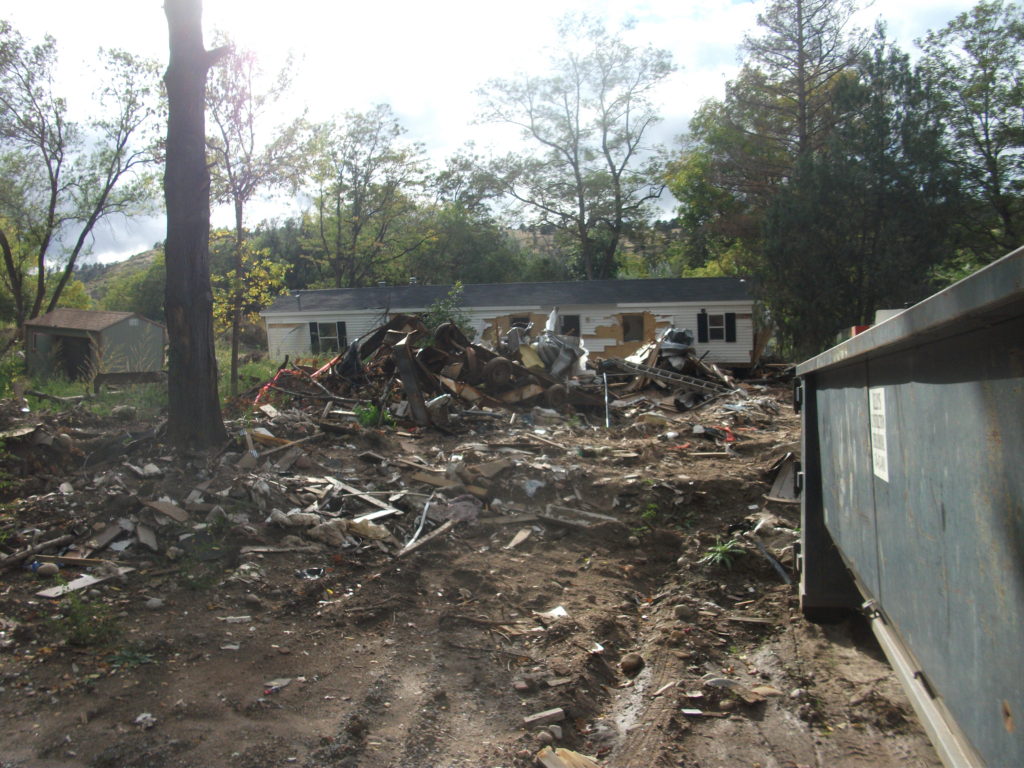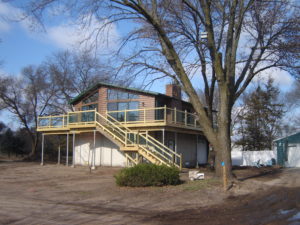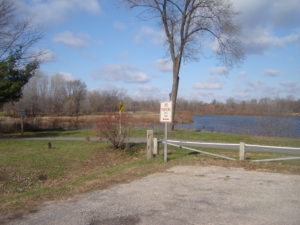It is possible to live in a city as large as Chicago and be blissfully unaware of some wonderful things. Chicago, after all, includes 2.7 million people spread over 227 square miles. My wife and I have lived here since 1986, but we do not spend much of our time traversing unfamiliar neighborhoods. Like most people, we have well-worn paths, and at times we visit new areas where we know people and learn from them. Also, like most people with cars, we drive by certain areas without taking time to really see all that they contain, as one might on foot. Because I walk through my own neighborhood, I know a great deal about what is happening. But there are others where I have not a clue.
Chicago is nothing, however, if not full of pleasant surprises. Never mind unpleasant headlines or presidential tweets about crime rates. There are reasons why millions of people still live here. I discovered one this Labor Day weekend through sheer serendipity. I participated in a small workshop at a home on North Virginia Avenue, a street I had never visited before. I looked it up on Google maps and discovered that the homes on the west side of the street border a great park along the North Channel of the North Branch of the Chicago River, a drainage canal built more than a century ago. This channel extends straight north from where it joins the North Branch around Carmen St., just south of Foster Avenue, a major east-west artery that extends from Lake Michigan through Chicago’s North Side into the northwestern suburbs.
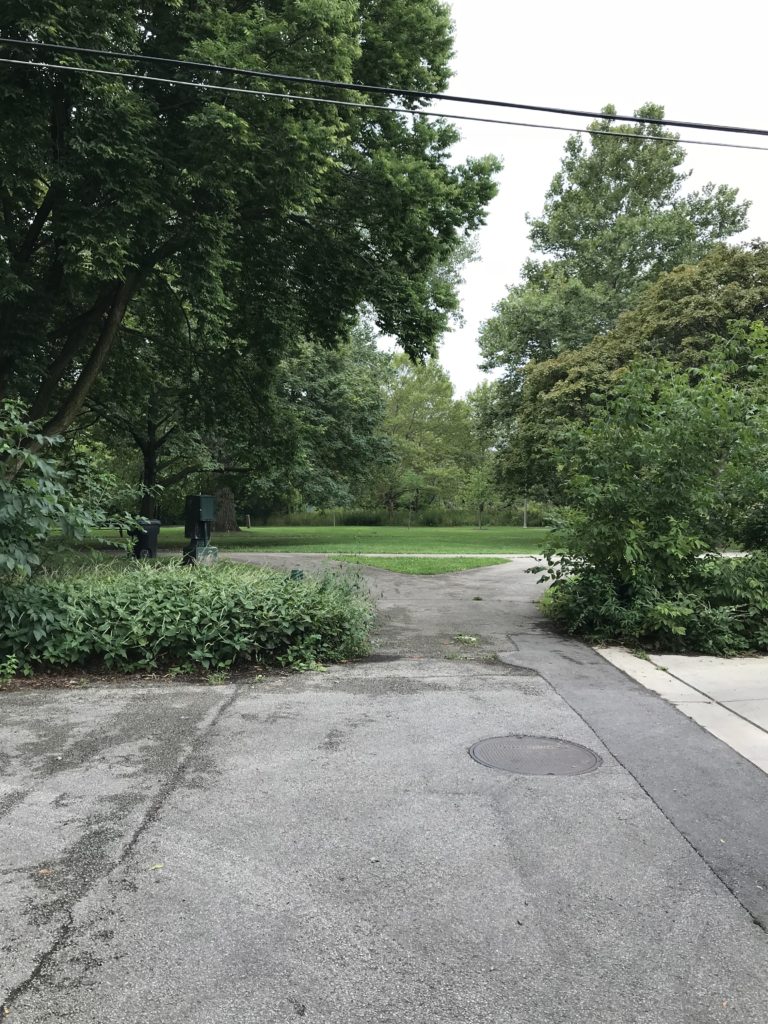
What I saw on the map invited me to explore after I left the event, a little more than half a mile north of Foster, several miles from downtown. I soon realized what a gorgeous asset this neighborhood has just beyond its western edge, and what a gorgeous day I had chosen for my short walk. As at other corners along N. Virginia Avenue, Ardmore terminates on a short stub that opens onto a trail inside Legion Park.
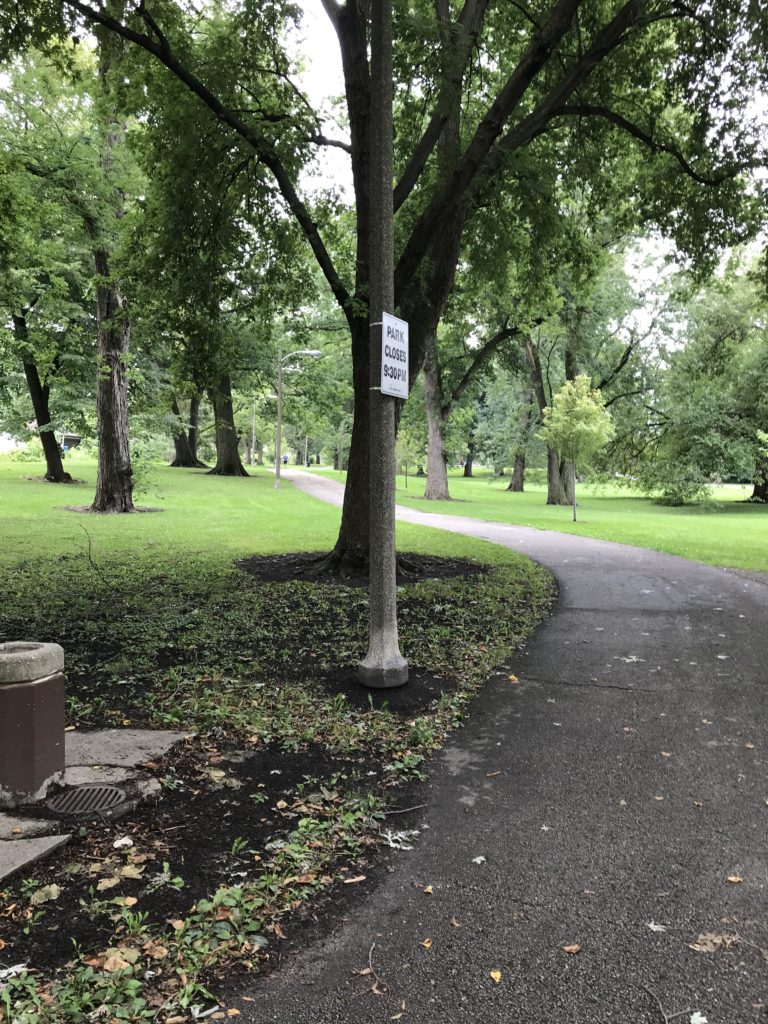
A couple of asphalt paths provide walking, jogging, and bicycle trails with a very modest amount of traffic behind an area largely composed of single-family homes. Between the paths stand a variety of well-maintained deciduous trees whose shade both quiets and cools the park space. As I walked south toward Bryn Mawr Avenue, a major street with a bridge over the channel, the Legion Park Playground, a small haven for children needing adventure and exercise, loomed ahead. A mother and two daughters were using the merry-go-round. In the distance, on the far trail, came bicyclists who never noticed my small camera and did not need to. It was past 1 p.m. on a Sunday afternoon, and it was all so peaceful I could have sat and communed with nature for hours, undisturbed. Someday I may return for that purpose, but today I wanted to explore.
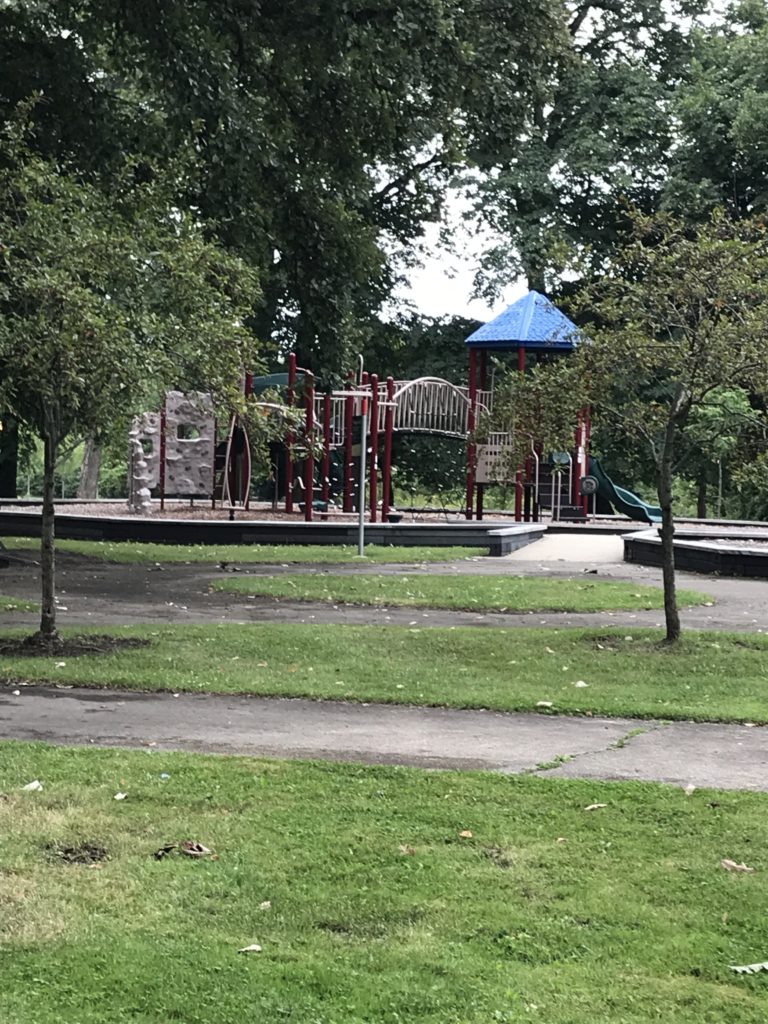
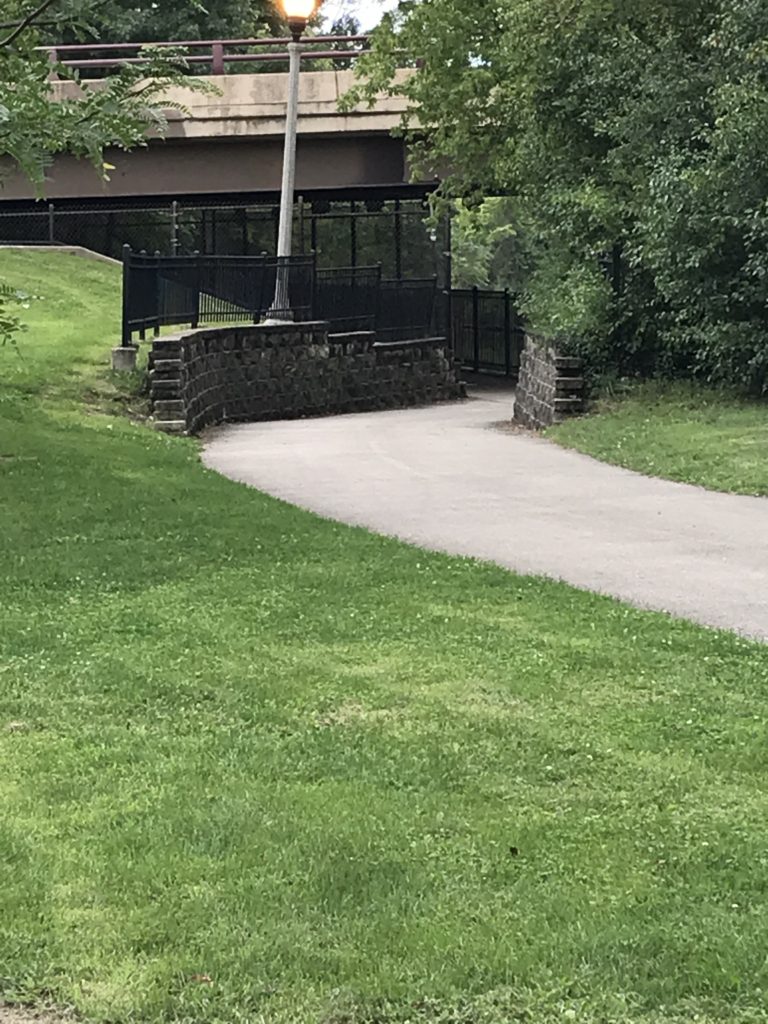
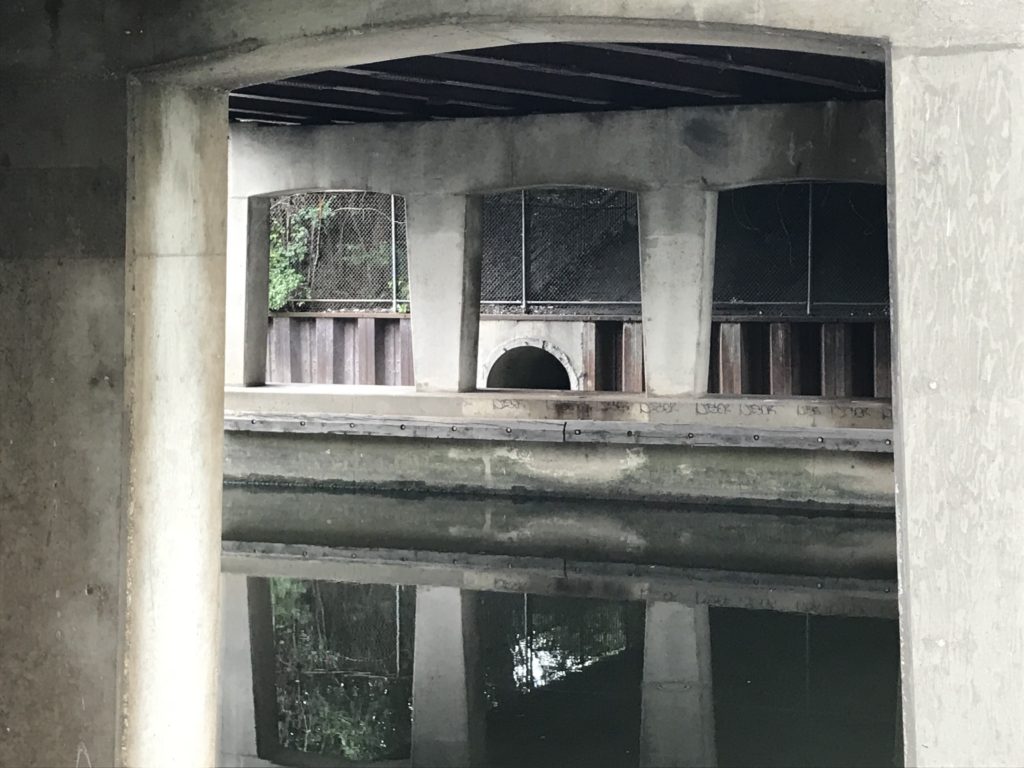
Exploration led me to a follow a cross-path to the North Shore Channel trail closer to the water, which, for the most part, lay hidden behind a screen of forest and uncut grasses, but the trail now led closer to the water by passing under the street above, leading me to a brick wall topped by wrought-iron fencing. Inside the tunnel I found the concrete support system for the road above, the sort of infrastructure that reminds you of what is necessary to allow a road to cross the waterway with minimal disturbance. If it was quiet in the park, it was even quieter down here. The water may not have been especially clean, but in its stillness, it provided a vivid reflection of both the steel girders and the verdant growth above it.
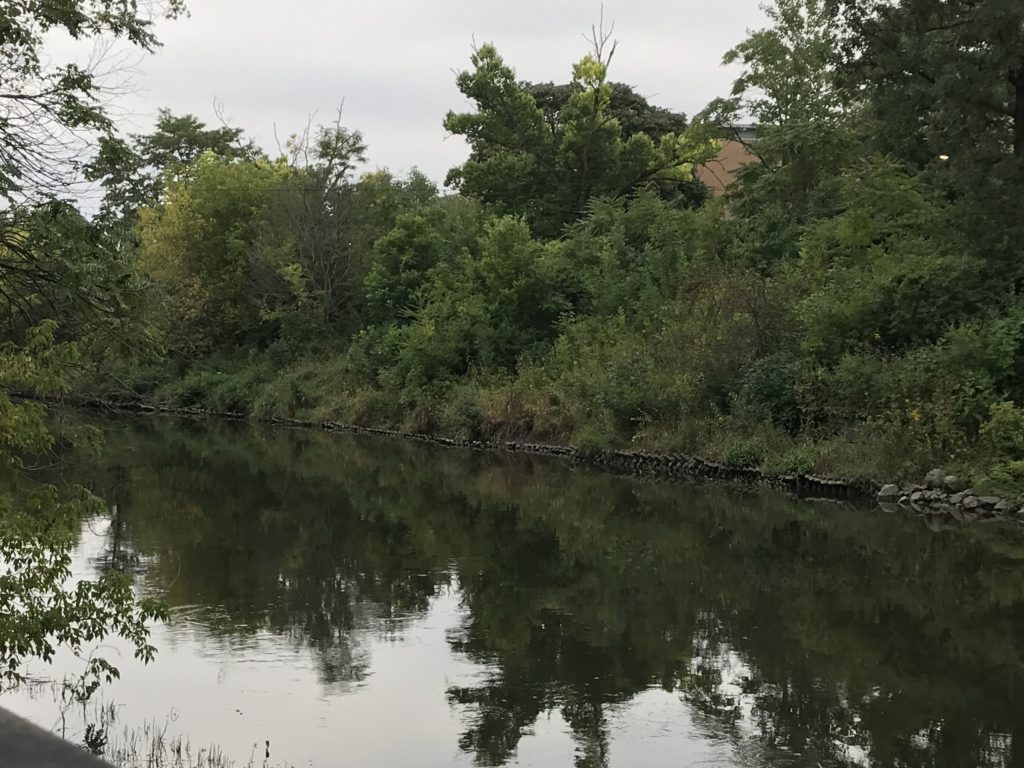
And then, just a few feet away, the waterway emerged in full daylight, with all the foliage that grew above its banks, all the way down to the riprap at the water’s edge. In a matter of seconds, I found myself south of Bryn Mawr, with a whole new section of the park emerging with its own paths, its own playground, and its own softball diamond. I quickly realized that the park was the backdrop to North Side Preparatory High School, which fronts on Kedzie Avenue, but enjoys a remarkable backyard view for those with the wisdom to take it all in.
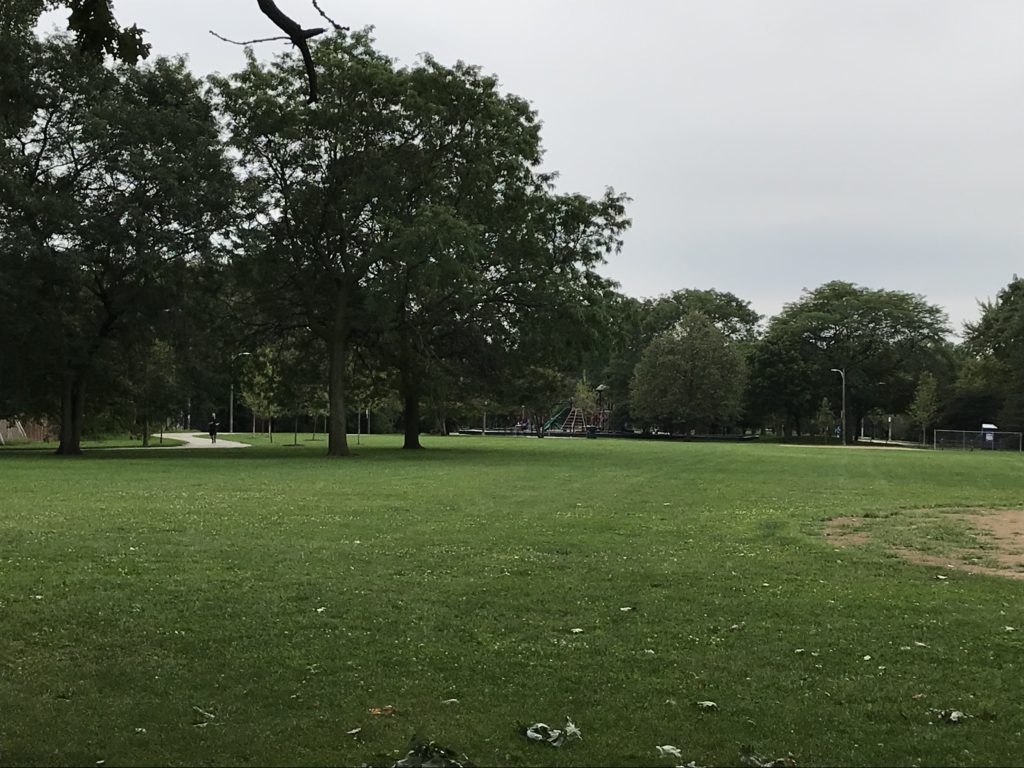
All this took me perhaps 20 minutes of a slow stroll, with time to shoot photographs. I am aware from the map, and from the sight lines of the channel, that the park extends much farther both south and north from what I saw. But it reminded me, with my own knowledge of the urban landscape as a planner, that cities sometimes, accidentally or intentionally, remember that the best use of a floodplain often is open space, not development, and that the result can be a beautiful asset for the areas around it that are above the water. In Legion Park, even with what to my knowledge is a minimal history of flooding, there is ample room for the water to overflow its banks while harming nothing. The natural environment responds to the freedom we have allowed it and provides us with solitude, and beauty, and an abundance of ecological services. The city can co-exist with its riparian corridors, which afford habitat and recreation in the same space.
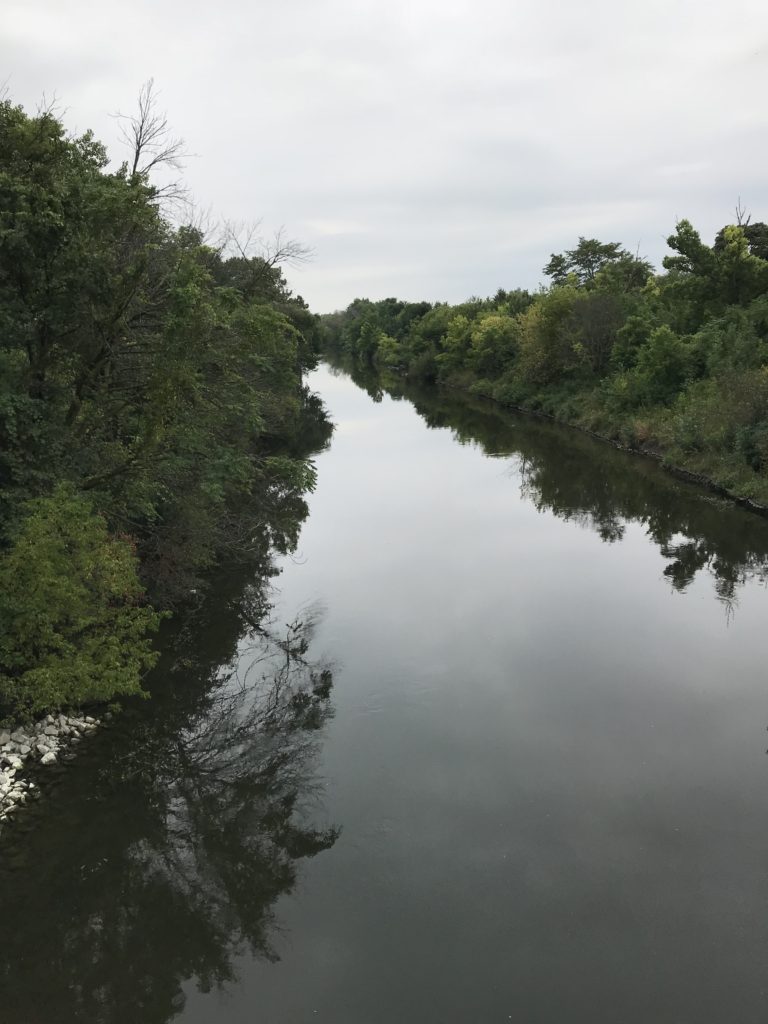
Chicago, in recent years, has been discovering that the sacred community space it has preserved so doggedly along its lakefront can and should include its riverfronts as well. The city has cleaned up and improved its Riverwalk along the main channel of the Chicago River downtown, a development I profiled on this blog about three years ago. In this morning’s Chicago Tribune, I read of new kiosk vendors doing business in a new covered space below Wacker Drive along the Riverwalk. But the Chicago River and its tributaries extend much farther into the heart of the city, and they can all serve a purpose in making the city more livable. In fact, in these less populated, less densely developed areas, the very openness and the greater stillness can inspire a spirituality that is harder to achieve in the downtown canyons that linger below skyscrapers and honking traffic. In Legion Park, I could not even hear the traffic. I could only see it in the distance—or witness it on two wheels as someone bicycled past me. What a magnificent gift. We should appreciate such treasures for all they are worth.
Jim Schwab

